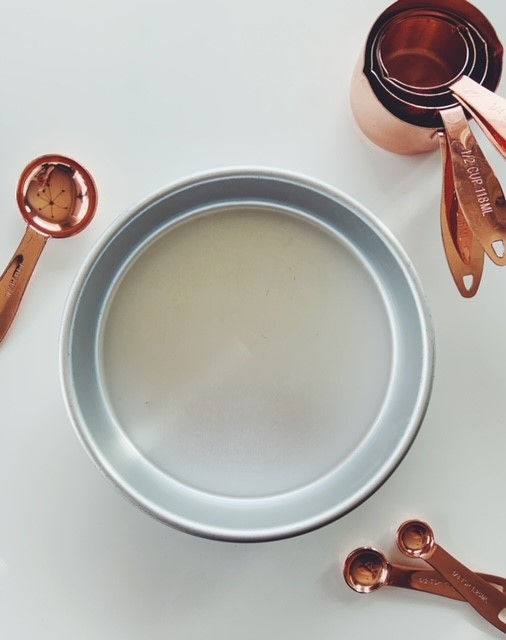Baked from Scratch
- gingerandspicecake
- Mar 20, 2021
- 4 min read
Updated: Feb 24
How many of you have baked a cake from scratch? How many have only ever used a box cake? If you’re like me, I grew up with cakes made from a box. Most of my early married life I remained in the dark about the amazingness I was missing out on. I’d never experienced a cake made from scratch, with the exception of fruit cake, (but I don’t think that counts) until I found a recipe that caught my eye and I dove in, never to return again.

If you haven’t baked from scratch what’s holding you back? Do you find it fussy? Have you tried but it didn’t turn out as you had hoped? I have learned a lot over the many years of cake successes and cake fails. This blog is dedicated to helping you trouble shoot your bake and get you enjoying the world of “from scratch."
There are so many things that can affect your end result. Most issues with baking are narrowed down to ingredients (substitutions,) technique (incorrect measuring) or tools (pans). I’m going to walk through each of the most common things that can mess with your desired outcomes. But first, my advice is to read your recipe thoroughly prior to beginning your bake. Ensure you have all the listed ingredients and tools you will need to follow through step by step. Depending on where you have sourced your recipe, note your method of measurement. In Canada we normally use the imperial system of cups, tsp, etc.., recipes from the UK will be in metric, grams and ounces. So you may need to do some conversion before you start, or find a different recipe. Alright, Lets dig in.
Use Butter not Margarine
Always use butter when baking, not margarine. Margarine has a higher water content and is made from plant oils. Butter is made from dairy and rich in saturated fats. The fats are what create moisture. I use unsalted butter, otherwise you will have a very salty recipe. I grease my pans with butter and place parchment paper in the bottom. This prevent sticking and gives you a perfect finished edge.

Measuring Flour
When measuring your flour, add flour to your measuring cup with a spoon. Don’t over fill or pack down. Scooping a measuring cup directly can affect your flour measurement because it will remove the air and pack in. Recipes are made using an exact amount of ingredients, too much flour can negatively affect your bake and create dry, dense cake.
Adding Fat
If your cake is dry you likely need more fat. Fats come from butter, oil and eggs. If you have a recipe of only egg whites, and your cake is dry, try adding the yolk. Sour cream is another great way to add moisture. Use one Tablespoon for every egg white.

Bake Time and Oven Temp
Baking times can vary. A recipe will have a suggested baking time. If it’s the first time you have tried this recipe, scale back 5 mins from the total bake time suggested. When the timer goes off, use a cake tester (or toothpick) and insert it to check doneness. You want a few crumbs to stick to the tester but not cake batter. If not done, add a couple more mins to the timer and check again. If you’re finding that the recipe is over baked, you can turn down your oven temp the next time you bake (so instead of 350, use 325) and bake longer. Add 5 min intervals until you reached the desired bake. Don’t open the oven door to much during baking. You shouldn’t open the door in the first 75% of bake time as this can cause your cake to sink.
Pans
The color and quality of your baking pans matter. Dark pans produce dark colored cakes and will have dry edges because they heat up quicker. Light colored baking pans distribute heat more evenly. I use pans by Wilton.
Mixing
Over mixing will negatively affect your bake and create dry, dense cakes that don’t rise. When mixing wet ingredients or butter and sugar, mix at med to high. Recipes will call that creaming. You are looking for light and fluffy and for the sugar granules to dissolve. When adding the dry ingredients (your leavening agents) mix on low and just until incorporated. Stop and scrape down anything remaining on the side of your bowl.

Room temperature
Use room temperature ingredients. This allows dry ingredients to absorb the wet ingredients better and will help rise more evenly. I leave my butter, eggs and any milk out for a couple of hours before using. When serving your completed cake, serve at room temperature. Cold cake can appear dry. Room temperature cake softens up and release more flavor and moisture.
Fresh ingredients
Check you ingredients expiry date. Leavening agents like baking soda and baking powder should be used fresh and before expiration. Using older ingredients can affect your rise.
There you have it! The collection of my best tips and tricks to help you have a successful baked from scratch experience. Give it a try! I'd love to see your progress so tag me on social media @gingerandspicecakery and Happy Baking! Up next, cake decorating basics.













Comments